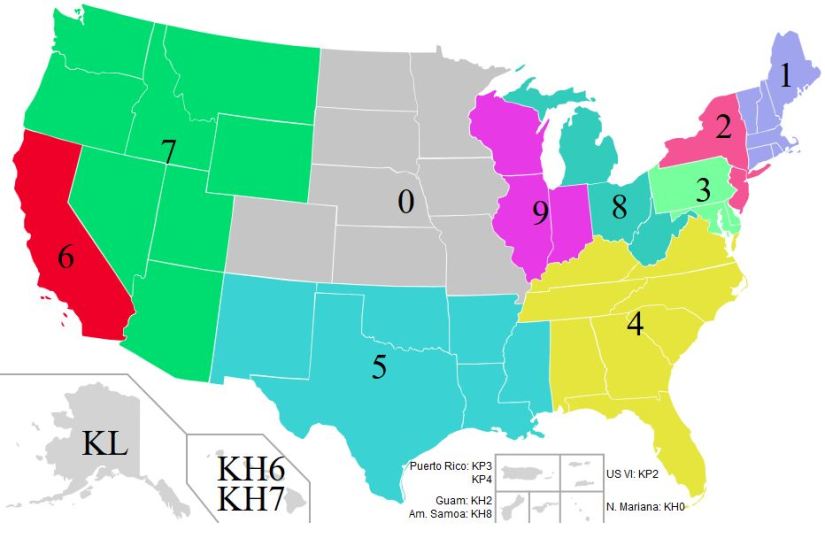Specifically relevant to USA hams, with some general application in other countries, this topic involves the number in an amateur radio call sign. None of this info is included in the license exam questions, so no green test boxes here; it’s really just good basic info for all hams to know.
As related in our post What Will My New Call Sign Be?, amateur radio call signs are systematically generated by the FCC in the USA with the numeric portion (KJ5QST) assigned by geographic location of a new ham’s registered address following successful completion of their exam.
The USA is divided up into call districts 0-9 (or 1-0, as historically deployed) per the map below:

Actually, it’s 13 districts when you include AK, the Pacific (including HI), and the Caribbean (including PR), but still only 10 numbers.
This is for administrative purposes so that the issuing agency (FCC in USA) doesn’t run out of 2 and 3 letter suffixes, and also give a general idea where the ham is located.
Generally speaking, a station with a 4 in its call (sometimes we say 4-land) is likely to be in a southeastern state, and so with other numbers 1 thru 0 per the map. Before ~1978, you could count on a call with 2 in it to be located in NY or NJ, but times have changed. Back then if you moved out of your call district, you were required to get a new call assigned with the appropriate district number.
With FCC rules relaxing about portability, plus a generous vanity call system, a 2 call could very well be in California today. So geographic link to the call district is now a general probability, no longer a certainty. By one estimate, approximately 88% of all amateur radio operators have call signs that reflect the district in which those operators live (2011 data, likely changed since). Even today it’s good practice to avoid confusion by modifying your call when operating out of district by appending /X where X is the mobile/portable zone of operation different from your call sign.
All this means is that new hams testing for their initial license in Ohio, for example, will receive a sequentially assigned 8-land call like KE8ABC. If they don’t like it, or prefer a different number of special significance, or to help create a memorable call sign, they can apply for an available vanity call sign with a different number 0-9, and whatever letters they apply for, as available, and as eligible.
We hinted that things have changed over time. For reference, here are the USA call districts from the early days of ham radio:

Note no district 0; district 6 was rather large; this was long before AK and HI were states.
Also as suggested, some of this applies to other countries besides the US of A. Call districts for Canada, Mexico, Brazil, Japan, Continue reading
